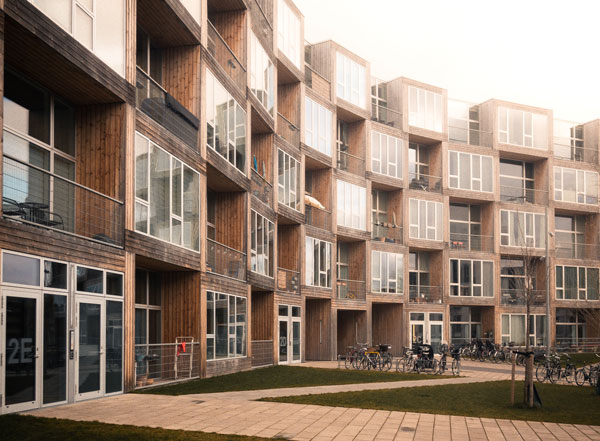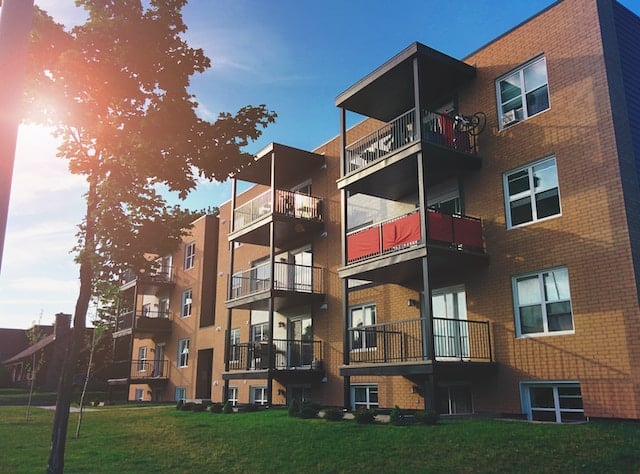Major investments forecast in “blended living” student accommodation
In early November in Berlin, the Class of 2020 – a think tank focused on the future of living, learning, and working in university cities – hosted the world’s largest student housing and coliving conference. Part of the context for the conference, and associated report, is that student housing shortages in many study abroad destinations have become acute – especially in urban locations. Accommodation consistently surfaces as a major concern for students and parents, and difficulties finding suitable housing can (1) lead to recruitment challenges and (2) exert downward pressure on retention rates.
The event saw 800 accommodation experts, real estate developers, city government officials, and higher education stakeholders discussing the future of living, working, and learning. Key takeaways include:
1. Major investments ahead
Investors indicate that they will pour €25 billion (US$27.5 billion) into “blended living” in the next five years in locations around the world. “Blended living” (aka “coliving”), practically speaking, means that traditional distinctions between different types of residential accommodation – e.g., hotels, apartments, and commercial buildings – are set aside (or “blurred”) in an effort to provide affordable and/or high-quality living spaces for students and visiting faculty.
The predicted investment is expected to be distributed like so: €12 billion for purpose-built student accommodation (PBSA), €4 billion for co-living accommodation schemes that are open to all residents/visitors, and €9 billion for “hybrid” models that blend student and other accommodation.
Student accommodation providers Collegiate, The Student Hotel, and Greystar are predicted to be the largest investors in the space. Charlie McGregor, CEO and Founder of The Student Hotel, which operates blended models at several sites across Europe, said,
“There’s still no clear definition on what coliving is, but for me coliving is a mix of residential and hospitality, an enhanced version of PRS (private rental schemes) where you are part of a community and have access to lots of facilities and services … We shouldn’t label a student, a young professional, or a hotel guest or an older person. They are all our guests. They are all welcome in our communities.”
He explains the concept of The Student Hotel as,
“The first in the world that’s able to cater to all of these groups under one roof with short- and long-stay accommodation, coworking, restaurant areas, gyms and events programmes which connect people from all walks of life, bringing together students, travellers, freelancers, entrepreneurs and neighbourhood locals.”
2. New planning and building regulations needed
For this new conceptual framework (i.e., blended living) to be successful, outdated planning and building regulations must evolve to allow for innovative design of shared spaces. Shared spaces also mean a lower environmental footprint because it allows buildings to be employed more efficiently, serving more than one type of “guest” (e.g., a business, student housing, community housing, etc.)
3. Models must vary according to community
Participants agreeing that optimal accommodation solutions will vary depending on destination and according to the needs and shapes of communities.
The example of Berlin
The Class of 2020 trend report notes that,
“Student experience, affordability, city life, social inclusivity, urban environment and connectivity blend to determine how well … cities first attract and then retain the best and brightest.”
In 2018, the organisation had ranked Berlin first among European student cities on 35 indicators related to the above. But, the report observes, “In the year since, rising rental costs have threatened affordability as the linchpin of Berlin’s appeal to young people.”
The Class of 2020 feels, though, that “new mixed-use developments and propositions for innovation districts with leading institutions and universities at their core position Berlin as a potential beacon for the very future of urban living.”
Making things concrete
The opportunities of blended living, or coliving, become easier to grasp when contrasted with the traditional way in which spaces are organised. The Class of 2020 Trends report provides these examples of inefficiencies: “Restaurants stay empty for almost half the day, valuable office floors in expensive downtown locations are only occupied between nine and five, and cars are just standing there doing nothing 95% of their time.” Solutions include restaurant tables being used as coworking spaces during the day when they are not open to diners, and lecture halls turning in to temporary cinemas at night.
For additional background, please see:













